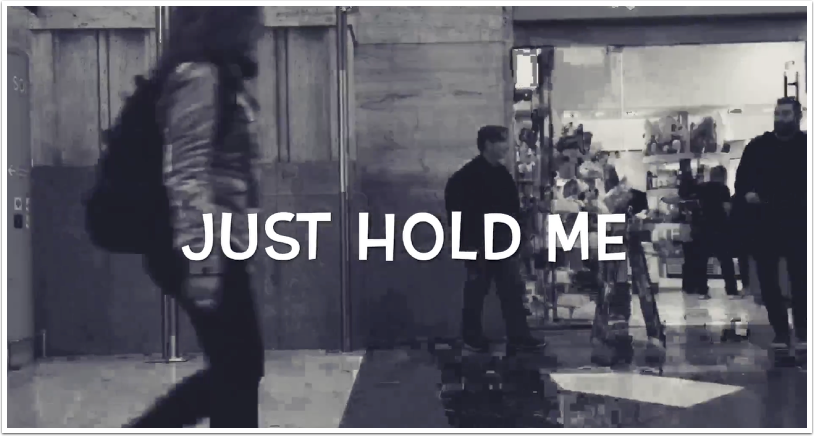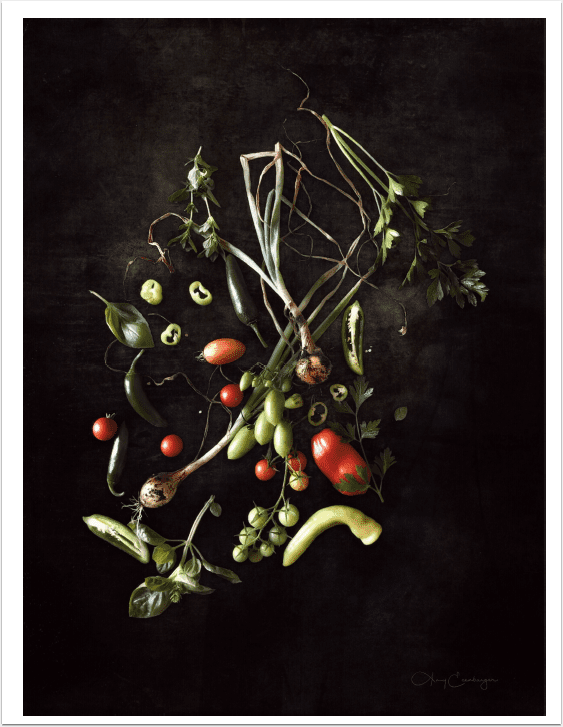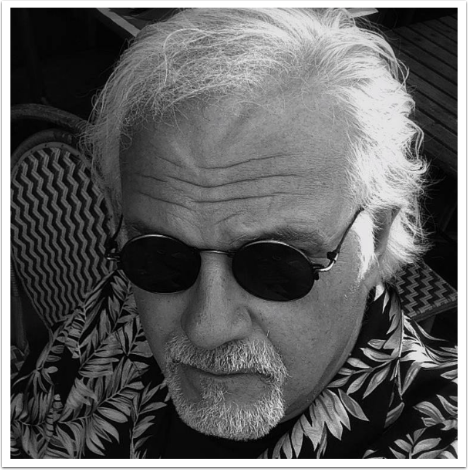Streets Ahead Interview: Susan Rennie – Mobile Street Photography
This week, the Women’s Street Photography Collective (Streets Ahead) is pleased and honoured to feature Susan Rennie in our interview segment.
Susan began taking photographs in the late 60s and studied with Lisette Model. After a long career as an academic and women’s health activist, she retired in 2005 and became serious about mobile photography three years ago. Her sense of timing and composition has enabled her to capture some great moments. I highly recommend a visit to her galleries.
Please tell us a little bit about yourself and what you do. Have you always been interested in photography?
I began taking photographs in the late sixties during my doctoral candidacy at Columbia University when someone loaned me a Pentax to photograph the student anti-war demonstrations. In 1970 my photographs of museum
goers were used to illustrate the Museum of Modern Art Annual Report. The next year I studied with Lisette Model, whose street photography had completely seduced me. Photography was much more attractive to me than political philosophy, but life intervened with the advent of the Women’s Movement, taking me in a different direction than art. After a long career as an academic and women’s health activist, I retired in 2005, and resumed my long dormant true avocation photography.

‘Taken for a ride’ ©Susan Rennie
Where do you currently live? Is this a place that gives you energy and inspiration for your street photography or do you have to travel to find it?
Having lived in Venice, California, since 1976, when I retired three decades later, I decided to take this historic, idiosyncratic, eccentric community as a subject for my photography resulting in three exhibitions: The Gates of Venice, The Venice Family Dog, and Venice Alley Art: Found Abstractions.
Venice, its beaches, it’s famed Boardwalk are a street photographer’s paradise and have provided a rich canvas for me. Today’s mix of grunge and gentrification Range Rovers competing with dog town skateboarders, international tourists oggling the surfers keeps the human kaleidoscope exuberant.

‘Beach siesta’ ©Susan Rennie
Does your location, be it a big city, a small town, or the countryside, heavily inform all your photographs in general, not just your street photographs? How do you choose the places that you go to photograph?
I am content to photograph anywhere. But, in addition to street life, I am drawn to natural beauty and have spent much time on the California and Oregon coasts photographing oceans and seascapes.

‘Not ready for Rothko’ ©Susan Rennie
What first drew you to street photography and how did you discover it? What is it about street photography that compels you go out to shoot on the street? What are the subjects that are of the greatest interest to you?
My first eighteen years in the United States I lived in Manhattan which, for me, provided a 24/7 street life drama/comedy/human weirdness, pathos, and
wonder. If I am in the streets (which, for me, means any public space), what my friends call “my beady eye” instinctively roves. Before mobile days, if I didn’t have a camera with me, I would shoot with my eye. With the iPhone I can shoot at will, anywhere, anytime in the “street,” which is never without the ongoing circus of life. Instinctively, it seems in retrospect, I shoot an image that suggests a story which the viewer will individually interpret. Ultimately, street photography is story telling.

‘Don’t overdo it’ ©Susan Rennie
Do you sometimes secretly pose or direct the subjects in your shots or do you always shoot spontaneously? Do you think there is a “right” way to take a street photograph? There are those who feel that a photograph is only good if it follows certain guidelines and fundamentals such as “the decisive moment” or that street photography should never be posed. How do you feel about this?
I would say that I shoot spontaneously, which includes waiting around, lurking, for a decisive moment. I don’t believe there is a right or wrong way to do street photography, but my personal preference and style is the Cartier-Bresson approach of candid immediacy.

‘Café techies’ ©Susan Rennie
How do you feel about shooting from the hip as opposed to looking though the viewfinder?
Occasionally I shoot from the hip, but mostly I prefer to frame with the viewfinder.

‘Untitled’ ©Susan Rennie
These days, the genre raises many questions with regards to the morals and ethics of taking photographs of strangers in a public environment. It is becoming increasingly difficult to shoot freely as a street photographer. What are your thoughts on this?
I am very keen on street portraiture, sometimes including milieu, sometimes close up head shots. There are times when I ask the subject for permission, particularly when these are people prone to being exploited homeless, buskers, panhandlers, travelers. I don’t take photographs of children without an adult’s permission. If a person objects to my having taken a photograph, I will show them the deletion of the image on the iPhone.

‘Different centuries, different shapes’ ©Susan Rennie
How do you feel about using model release forms and re-publication of images of the public? Are we morally, if not legally responsible?
I haven’t used release forms. My moral responsibility is not to exploit by taking photographs that could be demeaning or degrading. Legally, I follow the rule that photographs in public places not for commercial use do not violate the law.

‘Tech with style’ ©Susan Rennie
Do you have any personal rules when it comes to street photography? For instance, are there any situations that you feel are morally unacceptable?
Yes. I do not photograph people who are handicapped, e.g. physically disabled, or not in control of themselves, e.g. drunk, drugged, mentally disturbed.

‘Coffee break’ ©Susan Rennie
Do you think women street photographers share a different perspective to men? If so, can you elaborate on your thoughts?
I have never really believed this. Consider Lisette Model and Cartier-Bresson or Brassai. Is there any difference in their street work other than place and their own personalities and temperaments?

‘Best friends’ ©Susan Rennie
As a woman street photographer, do you find yourself drawn to shooting other women and children or do you prefer to shoot men or is this irrelevant? Would you feel uncomfortable if a male street photographer were to take a photograph of you?
I am drawn to the human scene. I don’t feel uncomfortable being photographed by men, but, then, I am a “woman of a certain age,” generally invisible.

‘There’s something for everyone on the Venice Boardwalk’ ©Susan Rennie
Do you think women street photographers are more accepted by the public when taking photographs or do you think they are more likely to be challenged? Do you have any experience of this?
Like so much in our society, I believe women are seen as less threatening than men, and it is easier to shoot in the streets for that reason. I have never been challenged for being a woman photographer.

‘Different tones for different phones’ ©Susan Rennie
Which street photographers have influenced you?
This is a tough one. Of course, Lisette Model and Cartier-Bresson. But also Lartigue, Kertez, Mary Post Wolcott, Danny Lyon, Mary Ellen Mark, Jay Maisel, Annie Leibowitz (of the Rolling Stone days). Today, in my
mobile art community, I find inspiration in Sheldon Serkin, Mathew Wylie, Alon Goldsmith.

‘Untitled’ ©Susan Rennie
Which mobile device do you use to take your photographs? Do you post-process your photographs? If so, what are your favorite post-processing techniques/apps? If you post-process on your mobile device, do you usually transfer the images as soon as they have been processed to social sites (in other words, capturing and editing the image while in situ) or do you prefer to have more time to work on your images? Please share some examples of your workflow process.
All my mobile work is with iPhones 4, 5S, now 6. When I became serious about mobile photography three years ago, I only knew about and used Hipstamatic, and only posted to Oggl when it went up. Last April I was introduced to the wider world of mobile photography by Connie Gardner Rosenthal, who found me on Oggl. I had never heard of the App Whisperer, nor of any of the iPhone apps I now use in mobile work. Once I
discovered the FB community of mobile artists, I was radicalized by an interview with Meri Walker in the App Whisperer, and with her encouragement, broadened out my work into mobile art. These days, for street photographs I rarely post-process with anything except Snapseed: a little more contrast, a bit of shadow work, perhaps a crop. I do it in
the iPhone and post images directly to Flicker and FB pages.

‘As I was saying’ ©Susan Rennie
“I was fascinated by the lively interchange, dominated by the woman on the left. One could imagine many stories. It also typified for me, one of Jay Maisel’s criteria for street photography, gesture”.
Do you pre-mediate the capture of your images? Do you have a plan or structure in place or do you prefer to act spontaneously? Please share your thoughts about some of your images what you were thinking, or felt when you shot those photographs.
My only preparation for street photography is go somewhere with my iPhone: a local street, the Boardwalk, the beach, a museum, a cafe. I have it my hand, with Camera+ dialed in, and shoot when my eye catches something. There is one wall, a nice neutral white, where I sometimes stand and photograph people passing by people who I think evoke a story.

‘Breakfast in black and white’ ©Susan Rennie
“This man and his two dogs shared breakfast often at a cafe I frequented. I thought of it as a family scene, struck particularly this day by the thread of whiteness”.
What is the importance of street photography within the entire body of your work? To what extent is street photography a major focus for you?
Street photography will always be a central strand in my work. Recently I have been focusing on mobile art, sitting in my studio conjuring images in my mind to creatively app, often riffing off a street photograph. A couple of weeks ago, I felt I was blocked really blocked. I went out to my local cafe and made some spontaneous photographs of the habitués. Back at home my mind exploded with possible art images. I realized my visual eye had unlocked my mind’s eye. Message: the streets feed the psyche.

‘But what’s it all about?’ ©Susan Rennie
“This is the wall I staked out to catch passers-by. The woman on the phone was oblivious to everything but her very loud conversation, epitomizing the new way of being in public space”.
Who do you think is the audience for your work? Is this who you want your audience to be? What is it you hope to achieve, either on a personal or professional level, with your body of work?
At this time my audience comprises friends interested in photography, and the mobile photography community I have found on Facebook. The latter is immensely important to me because I learn from highly skilled and inspirational photographers working in a wide range of styles. One example, is the Dogsitter’s App Circus, a site as fun as its name implies. Here photographers are challenged to play with a new app every week, enabling
me to discover new apps and ways of integrating them into my work by playing and seeing others playing with their images. Getting feedback from the mobile arts community allows me to gauge how I am meeting my goal of developing my own skills and making images that satisfy me. I would like in time to be known as an inspirational mobile photographer.

‘Untitled’ ©Susan Rennie
“The subject is a regular on the Venice Boardwalk. I have a series of bearded Boardwalk men, and the hipster sunglasses matching his beard were irresistible. Again, fabulous “gesture”
What do you think distinguishes your street photography from others in the group?
Perhaps I do more work in color than strictly black and white.

‘Is the pain in her head?’ ©Susan Rennie
“I knew this homeless woman who haunted my neighborhood. I would give her coffee and a bagel on my return from a cafe. One morning she was sitting on the curb in front of this wall mural a benign yet threatening chimera and I took the shot feeling it was a testament to what I imagined was her torment on the streets”.
Where do you show your work? How has social media played a role in your photography? Which platforms are you most active on?
My mobile work is seen in some twenty Facebook groups to which I subscribe, as well as Flickr. I use Flickr to post to mobile sites such as:
the App Whisperer groups, Mobiography, iPhoneographyCentral, Mob Paint, MobFiction. These global communities are the bedrock of my current photography.

‘Exam time’ ©Susan Rennie
Do you have any tips that you would like to share with us? Is there anything else you would like to add?
I can’t ever see going back to conventional cameras. I feel, doing mobile
photography, that I am participating in a revolution, the creation of a new genre in photography global, democratic, subversive. And it has brought me immense joy.

‘Untitled’ ©Susan Rennie
Susan Rennie




6 Comments
Carolyn Hall Young
Great interview, Cara and Susan! I appreciate the perspective!
Joanne Carter
Thank you so much for your feedback Carolyn.
Cara Gallardo Weil
Thanks Carolyn! It was really great to get to know more about Susan and showcase her work too!
Meri Walker
Cara, this is a wonderful interview and I so appreciate your choice of images from Susan’s galleries. She’s a massively talented photographer and it’s really wonderful for the community of women mobile photographers to hear more about her history and see so much of her work collected together in one place. She said she wants to become an inspiration in the mobile community and I think she already is. The fact that she has put down bigger digital cameras to concentrate iPhone work after a lifetime of learning is a real testament to the power of mobile devices as cameras.
Cara Gallardo Weil
Thanks Meri! Actually I can’t take credit for choosing Susan’s images – with these interviews we ask artists to submit their favourite images that best represent their work in this genre. I agree with you that Susan is already an inspiration to many in the community and it was wonderful to have to opportunity to read more about her and her work process.
Tracy M Griggs
Very nice. Made me miss Los Angeles, my home for 15 years – I used to bike and roller blade on Venice boardwalk and eat Jodi Maroni’s sausages.
Thanks for the memories!